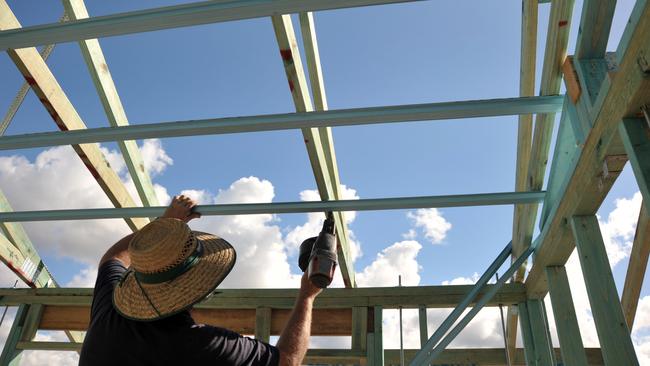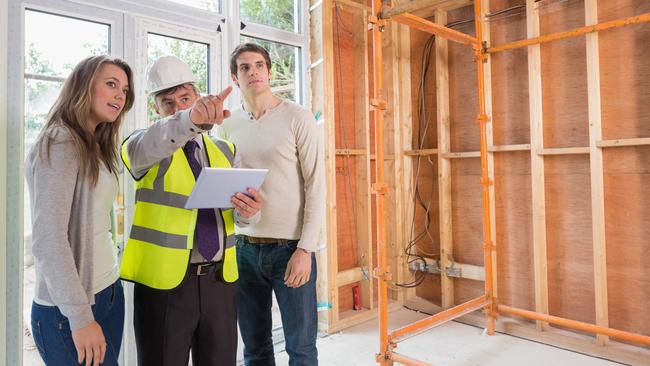Residential construction costs pick up pace in September quarter
The federal government wants to address the housing crisis with the construction of more than a million homes but its key plan won’t be made easy by data showing building costs are rising.

Further pressure has been put on the federal government’s plan to address the housing crisis with a rise in residential building costs.
Construction costs grew 1 per cent in the September quarter, in line with the pre-Covid decade average, according to CoreLogic’s latest Cordell Construction Cost Index.
However, the CCCI, which tracks the cost of building a typical new dwelling, found that the third quarter result was double that of the 0.5 per cent rise in the June quarter.
CoreLogic economist Kaytlin Ezzy said the government was aiming for 1.2 million new, well-located homes over five years.
“The recent re-acceleration of the CCCI could put additional pressure on an already difficult-to-achieve goal,” she said.
“Over the year to June, approximately 176,000 dwellings were completed, 26.6 per cent below the 240,000 annually needed to fulfil the target.
“While 250,000 homes remain within the construction pipeline nationally, the sluggish flow of new dwelling approvals suggests a shortfall of projects once the backlog is worked through.”
The latest CCCI figures were the strongest quarterly increase seen since the 1.9 per cent rise in the 2022 December quarter. In the 12 months ending September costs rose 3.2 per cent, up from 2.6 per cent over the 12 months to June, although down from this the 4 per cent recorded this time last year.
On a state-by-state basis, the quarterly change in CCCI was highest in Queensland at 1.1 per cent, accelerating from the 0.3 per cent lift in the June quarter.
Construction costs in NSW and Western Australia grew 1 per cent, while Victoria and South Australia tied for the smallest quarterly increase – both up 0.8 per cent over the quarter.

The latest Consumer Price Index data from the Australian Bureau of Statistics showed the CPI rose a further 1 per cent over the June quarter, following a 1 per cent rise over the March quarter.
The ABS noted that new dwelling purchases by owner-occupiers rose by 1.1 per cent as builders continued to pass on higher labour and building material costs to buyers.
Ms Ezzy said residential building costs made up the largest share of the housing component of the consumer price index.
“As a forward indicator, the recent re-acceleration in the CCCI is concerning for the new homes component of the CPI, as the two series are highly correlated. This may partially offset the impact of slowing rent growth on housing inflation,” she said.
“Additionally, the increase will be unwelcome news for builders, who are still working to repair profit margins.
“Although the latest quarterly rise aligns with the pre-Covid decade average (1 per cent), overall construction costs have surged 29.5 per cent, putting significant pressure on the feasibility of many projects.”







To join the conversation, please log in. Don't have an account? Register
Join the conversation, you are commenting as Logout